My "native" CanJam is CanJam New York. I always make a point to pack my car to the brim with gear to show my friends who fly in to attend. However, this was the first time I've flown to a show. This experience was liberating, as there was nothing to plan, no gear to worry about besides what was in my sling—I did forget my camera, so I apologize in advance for all of my phone pictures. All I had to do was eat, gab, and listen to headphones. In the end, I wish I listened to fewer headphones and did more gabbing and eating.
Headphones
Audeze
CRBN2 — The original CRBN sounded fine, but too soft and "safe." The CRBN 2 is a little less soft and a little less harsh in treble. I actually felt it was agreeable until I listened to Tool and it fell apart. sounding incredibly shrill.
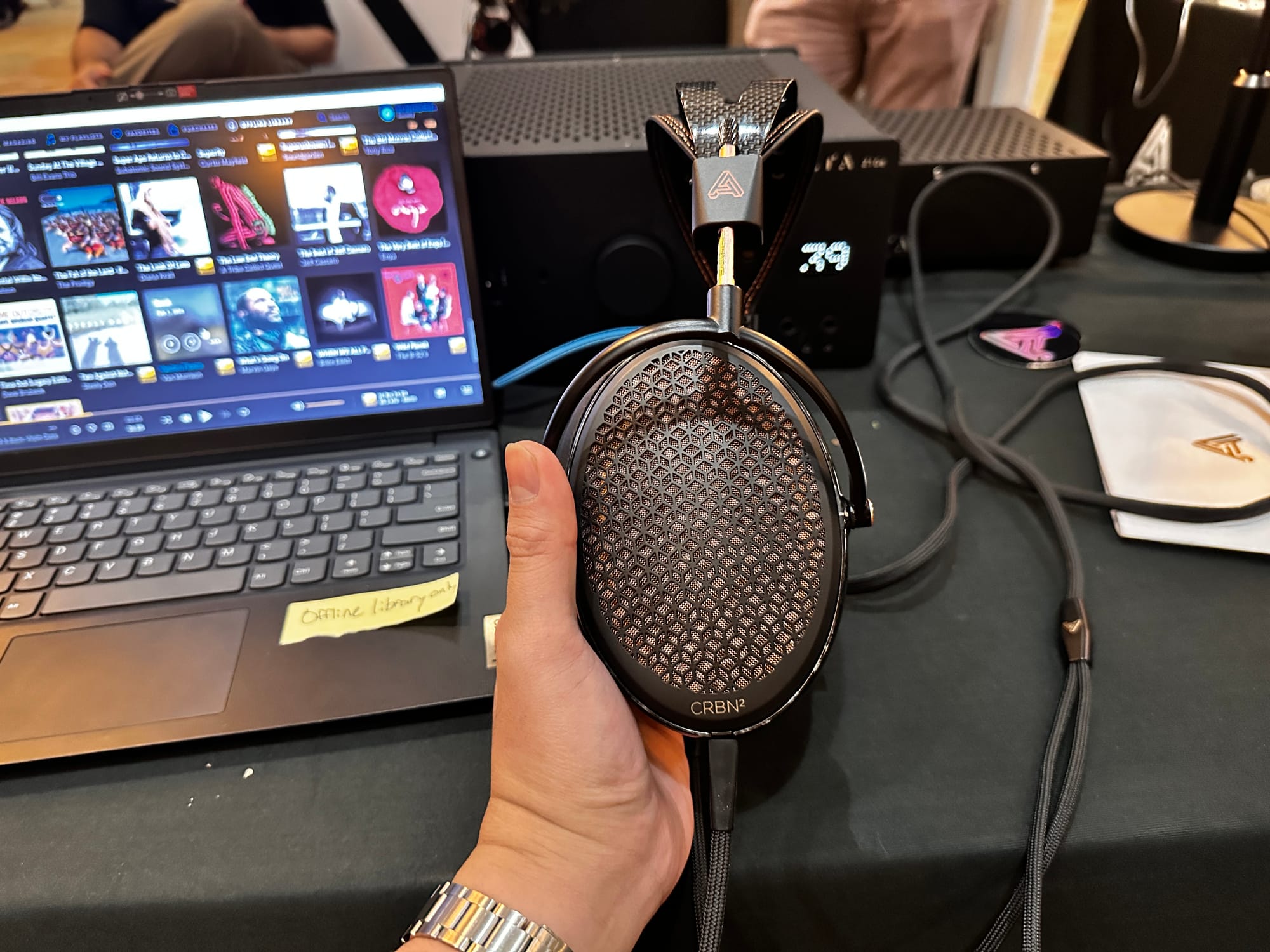
Beyerdynamic
DT1770 MKII — I haven’t heard the original DT1770 so I don’t have much of a frame of reference for what’s been changed. However, I can say that this is awkwardly thin, has too much treble, and is really lacking in texture. It sounds like a headphone that should cost a quarter of the price, if that. The only things this has over an AKG K371 are comfort and probably durability.
DT1990 MKII — I've had the DT1990 twice and I do think the MKII is a bit better than the original. I forgot that it comes with two sets of pads, but the pads on it made it sound less congested than the analytical pads on the original DT1990, which was welcome. The treble is still horrifically elevated though. I’d rather have the DT880 than this.
Focal
Azurys — I really liked these. I sold my Bathys in part because they were uncomfortable but also because they were too congested and metallic. The Azurys solved the latter problem almost completely. They’re still a bit congested but these may be the most “normal” sounding closed headphone past the Audeze Maxwell’s price range. Too bad they can’t fix the fact that my head’s too big for it.
Fostex
TH1100RP — This is the first open planar headphone Fostex has released since the fairly unpopular TH500RP. I had a feeling that it wasn’t going to sound very much like the planars from Hifiman or Audeze. I was right, but unfortunately I was right in the wrong direction. The bass was wispy and thin, even compared to a typical Hifiman. The midrange had an awkward hollow but distorted character that I remember from the T50RP. But the treble didn’t seem to bother me as much as most planars.
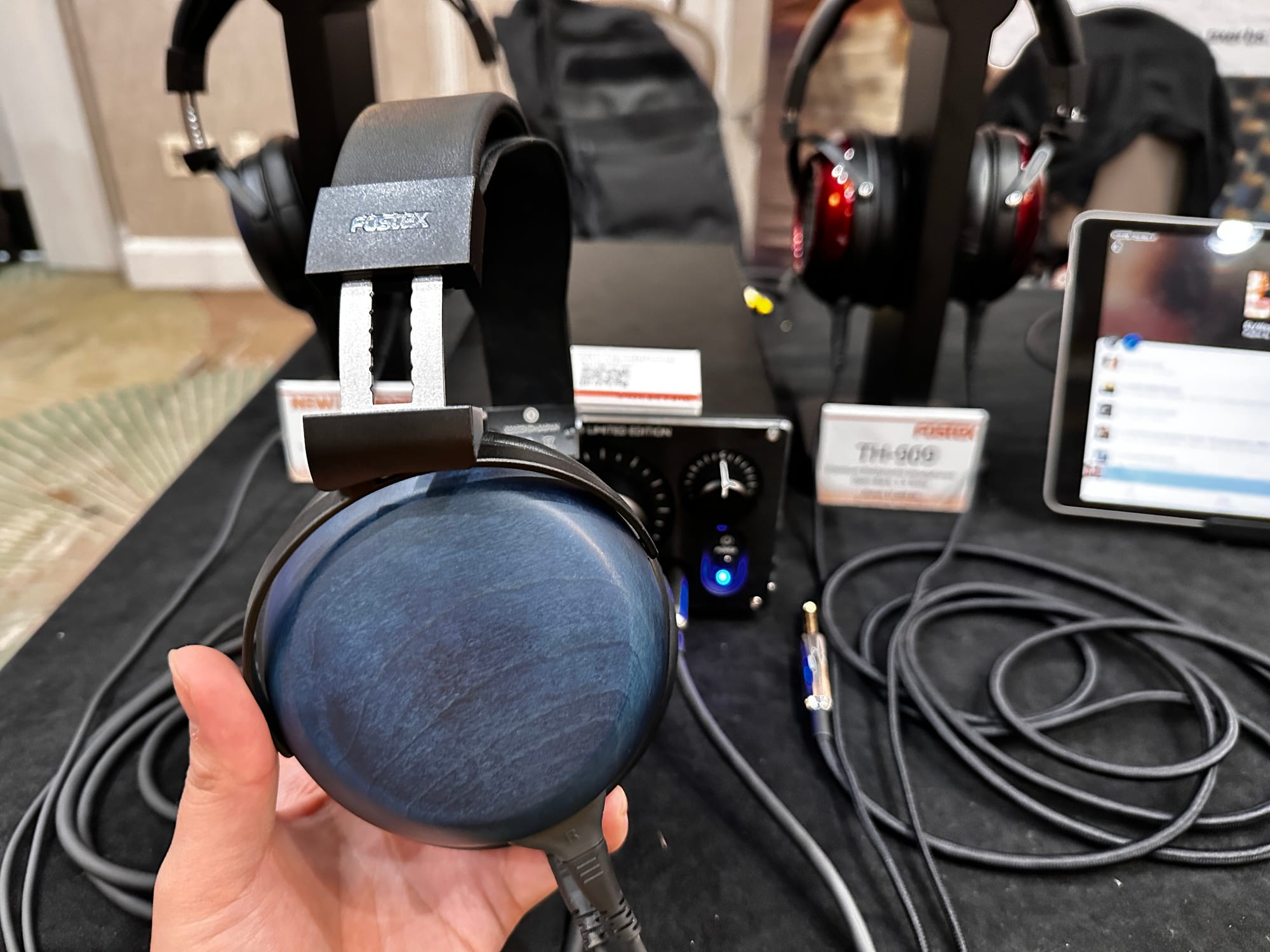
TH1000RP — Unfortunately this was probably worst in show for me. Its sound wasn’t unlike putting your phone in a cup to make it louder. I forced myself to listen for a bit of time so I could get a grasp of its sound better and it only got worse from there.
Grado
HP100 — This was the second worst headphone at CanJam. This was the brightest headphone of the show and the most mid-recessed headphone of the show. It made Hifiman sound dark and mid-forward. I never want to hear this headphone again. I even like a lot of Grados! I'm not sure what happened here.
HEDD Acoustics
HEDDPhone 2 GT — I felt the original HEDDPhone 2 was too dark and recessed in the upper midrange, but unfortunately I think the GT boosting those upper mids made it sound worse to me. The timbre was quite off, which the boosted upper midrange made more obvious, and the GT didn’t improve on how very soft the HEDDPhone 2 sounded to me.
Hifiman
Isvarna — Hybrid headphones aren’t new, but I’m not sure if I can recall a headphone with a planar and dynamic configuration. Most hybrid headphones use a dynamic driver for most of the range, then an electret or balanced armature for extended range. The Isvarna, however, uses a dynamic driver as a woofer and a planar driver for the midrange and treble. I was skeptical of this, as Hifiman’s forays into the closed headphone market have sounded pretty terrible. Surprisingly, the Isvarna sounded like a proof of concept that could be viable after a few generations. But in its current state, I can’t recommend it. The bass timbre was noticeably different from its harmonics which made for a very awkward, disjointed crossover. The midrange and treble were pretty gritty and nasal sounding. What’s most interesting is how it seems to behave. I noticed channel imbalance in the midrange that was left-biased. The rep said he didn’t hear it and they measured it to be fine on DMS’ 4128 that was at headphones.com’s table, but my friends also heard the channel imbalance. Part of the issue was that the amp seemed to be faulty as this was repeatable with other headphones. However, on a different amp and different set, I still heard this. But I wanted to see if the imbalance followed the driver by flipping the headphone around on my head. It didn’t; the midrange remained left-biased. So, this isolated the problem enough for me to believe this was a head/hair issue. The reps had shorter hair, while mine is long enough that I could see the seal being broken by it. I think leak tolerance is something that should probably be measured.
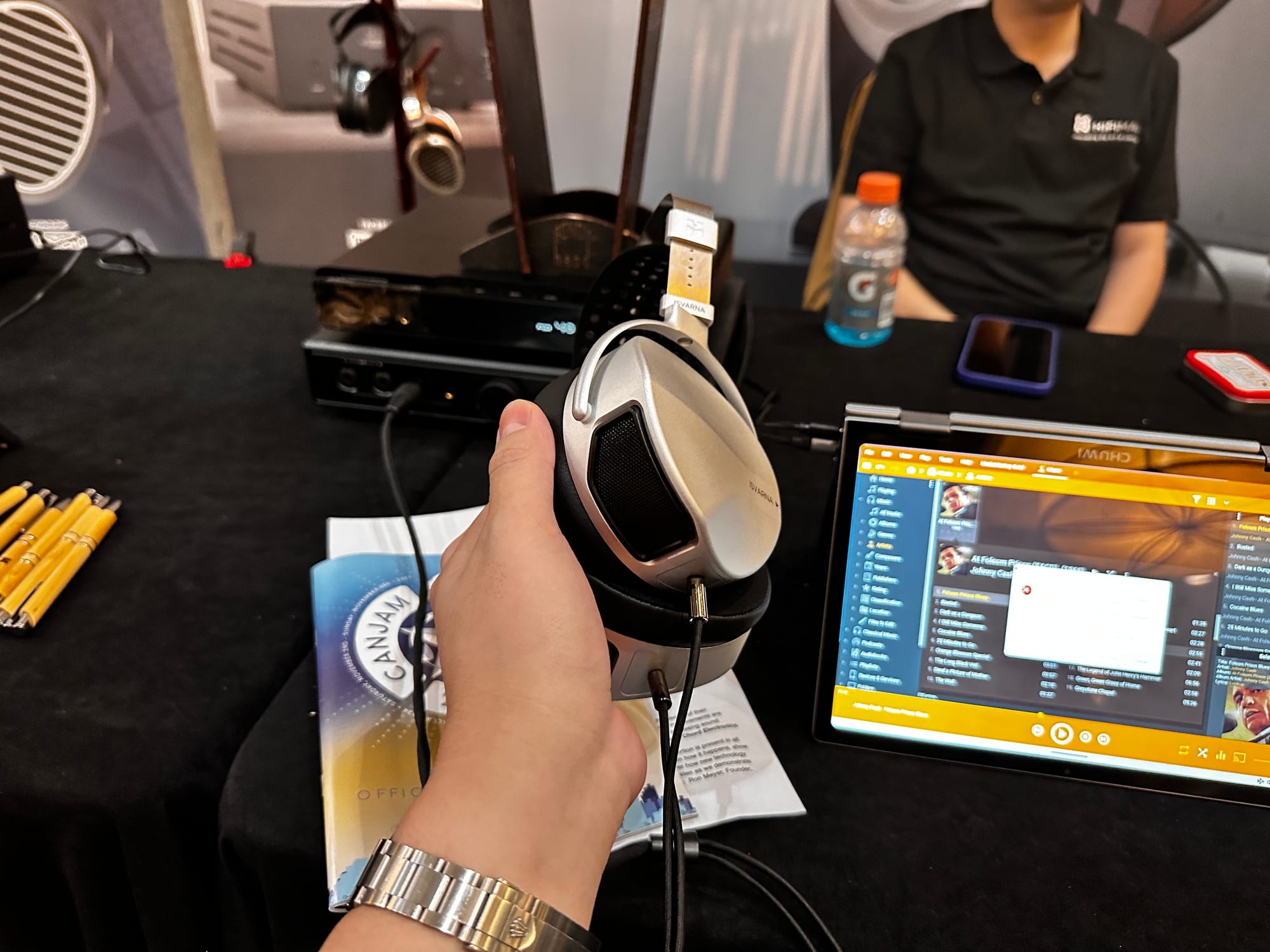
Arya Unveiled — I thought this was pretty good! It seemed to be the least harsh of the unveiled Hifiman headphones and also wasn’t too lean and dry. I could see myself recommending this to someone over the HD800S if they can tolerate the upper treble. On Day 2, I listened to it again and found myself enjoying it even more, so if this follows the seemingly typical Hifiman price drops this could be a competitive <$1000 headphone in a couple years.
Susvara Unveiled — I feel lukewarm about the original Susvara, which has always sounded too soft, too dry, too wonky in the mids, and too bright to me. I’ve pretty much only used it with nice speaker amps like the Esoteric A100 and Pass Labs XA25, so power is not an issue. The Unveiled version seemed to be a little tamer in upper treble and a little more normal in the mids, so it’s fixed about half of my issues with it. However, it hasn’t seemed to fix the qualitative issues for me. There were several units of the Susvara Unveiled scattered all around CanJam so I used it in probably a dozen setups and no matter what, it was still too soft-sounding for me. For someone that doesn’t index for dynamics, this is probably fine, but I also didn’t get the sense of decay that makes a transducer sound natural. I do think this is a linear step up from the "veiled" Susvara, but I didn't hear anything that justified its place over the Arya Unveiled.
HE1000 Unveiled — This was the most painful of the Unveiled Hifiman headphones for me. Way too bright, way too lean, everything I hated about the HE1000SE but just dialed a notch down. A notch down isn’t enough for me to tolerate it.
Mini Shangri-La — I was hoping I’d like this because after using the Shangri-La Sr. with an Eksonic T2, I finally understood the appeal of it. While it needs 8dB less treble, I actually found it to sound shockingly dynamic. As interesting as the Sr. is, the Mini is as boring. It was bright, soft sounding, and sounded not unlike the planar Hifiman headphones with the additional annoyance of needing an electrostatic energizer.
Meze
105 Aer — I actually liked this more than the 109 Pro! It sounds a little muddier but a little less bright, which is welcome for me. It suffers from sins of omission rather than sins of commission like the 109 Pro does for me. For $399, I could see someone that loves their Philips Fidelio X2 being very happy with this as an upgrade.
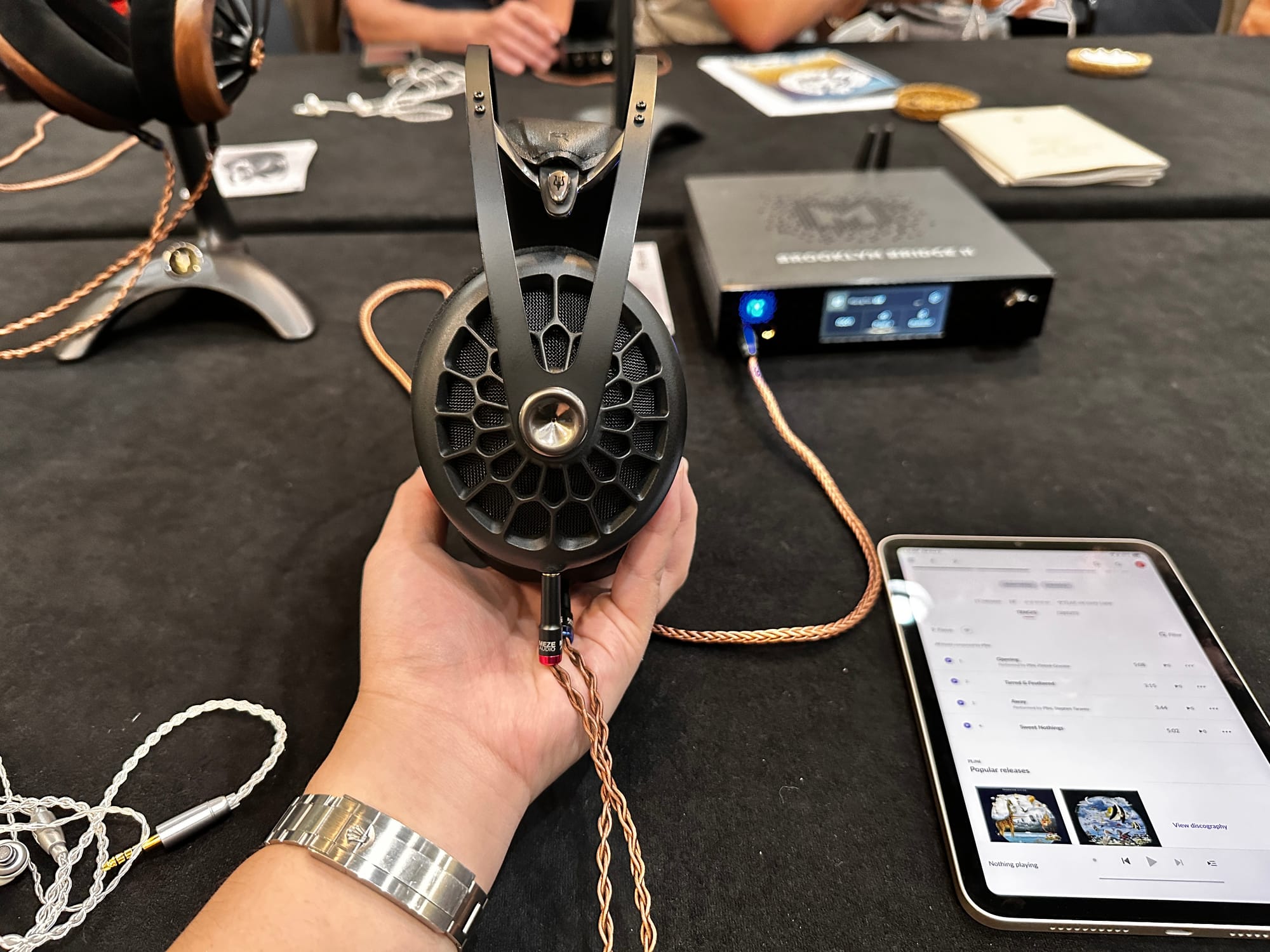
99 Classic — I’ve seen enough people say the more recent versions are better than the era of 99 Classic I heard years ago that I decided to try it again. Maybe there’s some unit variance but this one sounded pretty much like I remember the 99 Classic sounding. It sounds like a cave with too much bass.
Noble Audio
Fokus Apollo — It looks like a B&W knockoff but sounds better than one. Its "safe" V-shaped sound fit my preferences more than the metallic sounding Focal Bathys but the pads’ warmth and stickiness makes this seem like a nightmare to use outside…or inside. In the two minutes I used it, I started getting uncomfortably stuffy.
RAAL
Magna — The Magna had prickly transients that feel like bits of air hitting my ears but that’s pretty much all I liked about it. The treble was way too bright and worse, it clipped pretty badly out of the Envy.
Immanis — The first time I used the Immanis was at CanJam NY out of the Jotunheim and I didn’t really have any big feelings about it as it was pretty noisy at the RAAL booth. At Dallas, RAAL had their own room which made getting impressions much easier and unfortunately I think I liked it less. Out of the VM1a, it reminded me largely of a really expensive Hifiman HE400SE. I actually noticed a lot less bass than out of the Jotunheim. The treble was grainy and too harsh for me, not unlike the HE400SE. The midrange was the weirdest part of the Immanis for me though; I’ve been trying to figure out what sounds off about it and when a friend said he thought it sounded like it had bad comb filtering, it finally clicked that this is exactly what I heard. At least it has the same neat transients the Magna has.

Sivga
Luan — I’ve been wanting to hear this headphone for a while. As fun as it is to try high end headphones, realistically, more people want to know how stuff they can actually afford sounds. The Luan was a pleasant surprise. It’s a bit sibilant and V shaped, but infinitely less annoying than the Grell OAE-1. It’s lacking in dynamics and timbre isn’t great, but if someone is looking to upgrade from their Philips Fidelio X2 and wants more bass than the Sennheiser HD6X0-series has, then the Luan seems like a good fit.
Warwick Acoustics
The sound isolating booth was lugged to the show and I was excited to use both the Aperio and the Goldensound Edition Aperio in a quieter environment.
Aperio — I’ve heard the Aperio in a CanJam setting and thought it was way too bright and nasal-sounding. The booth only made the treble more bothersome to me, and the limp bass that I thought may be helped by the booth was unfortunately not any better. I also still noticed the weird timing issue I hear on all Warwick headphones where the midrange sounds very slightly slower than bass and treble. But it does sound pretty cool with vocaloid music.
Goldensound Edition Aperio — The treble is so much less annoying, which is very welcome. The timbre, however, is still pretty off and elevating the bass isn’t really what it needs since it’s so textureless to begin with, but I understand why this was done. The best analog I can think of is that they sound like DIRAC corrected speakers, which can be great or not great, depending on preferences. But…I probably would still take it over an HE-1. My excitement is palpable.

IEMs
TL;DR: Why is everything so bright?
64 Audio
Solo — 64Audio didn’t have much of a presence at this CanJam. They didn’t have a booth and this was one of the only 64Audio IEMs present. It was fine. It was really safe sounding, to the point where I forgot it was a planar driver. It didn’t do anything outright bad but I can’t think of a reason to recommend this over a Moondrop Dusk or Hisenior Mega5EST at less than 1/3rd of the price.
Alpha Omega
Omega — I just discovered this brand right before attending CanJam and I felt this was alright. It didn’t have much texture throughout the range and sounded edgy. I probably wouldn’t pick it for myself even as someone that sometimes enjoys an edgy sound. I assumed Alpha Omega was a new upcoming, entry level brand but now that I know it costs $2,800, yikes.
Brise Audio
Fugaku — The Fugaku is the IEM I was most eager to try at CanJam. At $17,000, it’s difficult to go in with an open mind, but I was hoping I'd enjoy it. In reality, it’s complicated. I liked the transients, as they were snappy in a way that reminded me of the RAAL headphones, but since decay was too fast–even faster than the RAALs–it sounded confused. The delta between the transient and decay creates the idea of a system that sounds impressive and “Hi-Fi” at first listen but upon further scrutiny, the way it sounds is not unlike looking at an overly sharpened photo. The bass was elevated but suffers from a strange lack of texture that actually reminds me of my FitEar DC. I love my DC for longer term listening because it’s minimally fatiguing for me, but it’s also fairly dark. The Fugaku, however, isn’t that. The midrange is forward, which I normally would think would be welcome for a transducer with boosted bass and treble, but the Fugaku sounded a little too nasal for me.
The frustrating thing for me is that as a package, I think it sounds pretty good. But it doesn’t sound great. It has some issues that I feel like would be fixable and while this may sound cynical, it seems to me like it was tuned in a way that would allow Brise to release a successor for more money. And if they do, they’ll get that money because it worked the first time.
But, on the suggestion of a friend I did listen to vocaloid music with it and it was hilariously fantastic, so maybe that’s what all these people buying Fugaku are listening to. That would be pretty sick, actually.
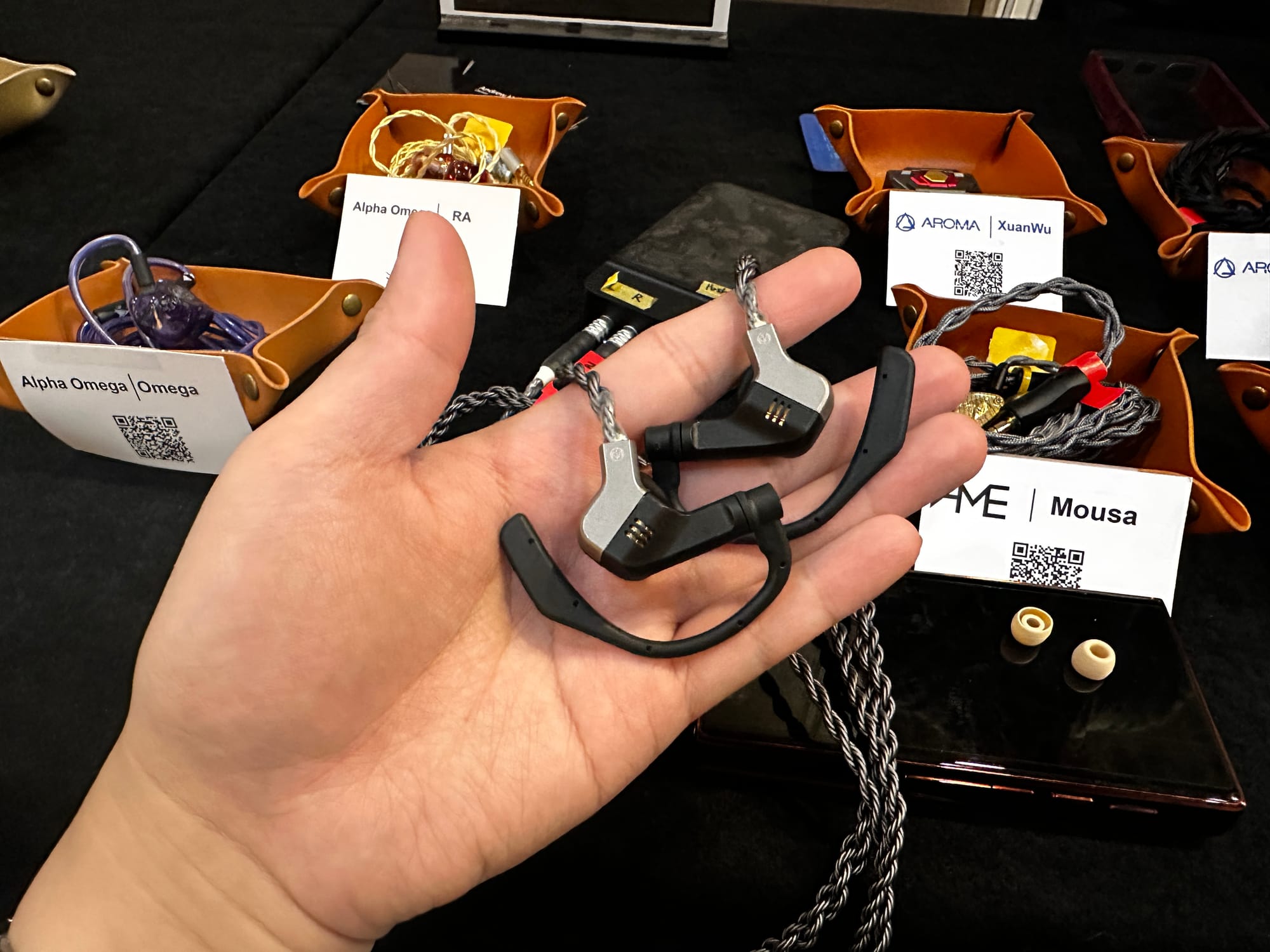
Campfire Audio
Moon Rover — I liked this more than the other >$1,000 single planar driver iem, the 64Audio Solo, but it was brighter. Tuning was more engaging but not to the point of being harsh. I would not have guessed this was a planar driver. I don’t want to say the price makes sense, because it’s still too expensive for the performance, but it makes more sense than the Solo.
Astrolith — This was probably the worst IEM of the show for me. It’s the kind of tuning that you have to intentionally make it this bad. It had way too much bass and somehow had negative definition in everything. It sounded really soupy and lo-fi.
Clara — This requires a little background. I’ve been following Campfire Audio since they ALO Audio. I’ve owned three different ALO amps (I still own a Continental!) and after hearing the Andromeda when it was released, expected great things from Campfire. Since the Andromeda, I’ve absolutely hated almost everything I’ve listened to from them. I owned a Trifecta and it was so bad I didn’t write a review for it because that would require using it for more time than I already had. I’ve been so disappointed with the products Campfire has released that I often actively avoid the Campfire booth and try to demo their products at Bloom Audio’s booth instead so I don’t have to lie about how bad their stuff is.
So, when I say I loved the Clara, know that this is being said with an expectation that it would be garbage. The Clara is the only thing I went back to listen to not once, but twice, to see if I was going crazy. I wasn’t going crazy, the Clara was, to me, the best thing a vendor brought to CanJam. I’d take a single pair of Claras over an Aperio, HE-1, Immanis, Fugaku, and PMG Audio APX SE combined.
Is it perfectly neutral? Definitely not, and I think that’s why it stuck out to me. It’s W-shaped, not unlike the ADX3000, but it’s done well. The low midrange is tucked a little to help with congestion, center mids seem boosted to keep the elevated bass from sounding overwhelming, and the treble is boosted because that seems to be the thing almost every IEM manufacturer is doing for some god-forsaken reason. But it rocks.
I was fortunate enough to compare it to a friend’s personal Subtonic STORM unit, and while it doesn’t really get close to the near-perfection of the STORM, it’s the embodiment of why I love the ADX3000 so much in an IEM. If the bass was cleaner I wouldn’t be able to stop talking about it. Is it for everyone? Probably not; it’s still colored enough that I don’t feel comfortable recommending it blind to people, but the Clara was the only vendor product I actually felt excited about. At $2000 for the resin version, somehow these almost seem like a reasonable price/performance value compared to all the garbage I heard at CanJam. I hope it’s not another 8 years until Campfire makes another good IEM.

Canpur
CP74e — The bass was the highlight of this IEM, but that’s was as far as the positives go for the CP74e. The treble was much too elevated for me and the midrange had this character that distinctly reminded me of older Chinese IEMs from before they all tuned to the Harman curve. While I don’t love Harman mids, I do prefer them to the awkward elevation this had.
Craft Ears
Omnium — The Omnium is one of the few IEMs I didn’t think was too bassy but that’s as far as compliments go. There’s something in the crossover between the upper bass and low midrange that sounds almost out of phase. I asked some of my friends to try it and tell me what they think is weird and they also had the same complaint without knowledge that I heard this too.
Dita
Mecha — This was just a prototype so I’ll refrain from saying too much because a lot can change between now and production but I liked this; it may have been my second favorite thing at CanJam. It was V-shaped but not particularly muddy.
Empire Ears
Novus — Going from the Mecha to this was jarring. Both sides had really bad driver flex, way too much bass that was unrefined to boot, and way too much treble. For $5000 this was unacceptable. Frankly, for $50 I would find this to be unacceptable.
Fatfreq
Deuce — This had a silly amount of bass. It didn’t have texture, but it was surprisingly not that intrusive into the midrange. For $239, it’s funny to listen to I guess. It’s named accurately.
Fir Audio
Xenon 6 — I haven’t gotten a chance to hear these until CJ Dallas and honestly I could have gone my whole life not hearing them and be better for it. This really is in contention with the Astrolith for the worst IEM of the show for me. It’s both incredibly muddy and incredibly piercing.
Radon 6 — I heard a unit at a local meet early this year and liked it a lot, so I wanted to hear these again with more IEMs fresh in my mind for comparison. They largely hold up for me but I don’t think they’re quite as clean as I’d want something that sounds this much to be. It's colored not unlike the Clara but I'd rather have the Clara.
Flipears
Artha Argentum — As a Filipino person, I’ve wanted so badly for Philippines-based Flipears to make something good. But everything I’ve heard from them was pretty irredeemable. The Artha Argentum is the most coherently tuned thing I’ve heard from them but there’s still way too much bass for most music I normally test with. It was pretty terrible bass too. However, Sharon Cuneta did sound pretty good.
IceLabs
Spectrumica — This was a prototype so I also don’t want to say too much, but as someone that’s a big fan of the Prismatica Gold, this was disappointing. It was really congested and I hope they fix…most of the sound before production. The all-BA Prismatica had significantly more convincing bass than this hybrid IEM.
Melodic Artification
Alter Ego — This sounded fine to me. The only major issue I had with it is that it sounded fairly congested. Balance overall was fine but I’m not exactly itching to hear it again.
Meze
Alba — I wanted to like this but I hated it. The bass was sloppy the midrange was very congested, the treble was harsh. Any of the non-KZ <$30 IEMs probably would get my recommendation over it.
MYVOX
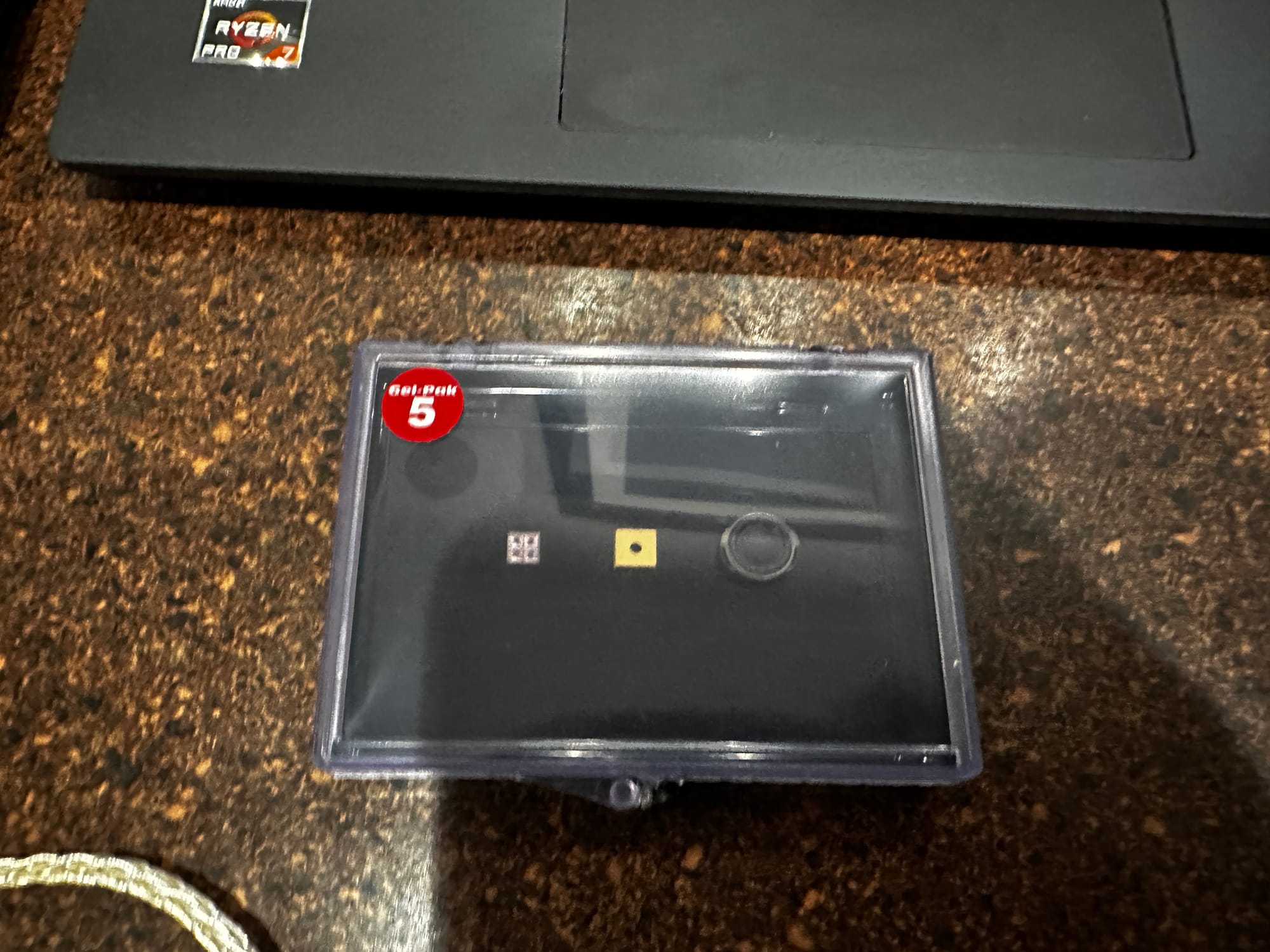
Proof of Concept — MYVOX is a startup MEMS supplier that came to CanJam to show off their prototype drivers for manufactures to use. Their prototype was a single full range driver that they warned wouldn’t have much bass. Surprisingly, it was pretty good! What stood out was the midrange tone and timbre were quite nice, and they were textured enough for me to legitimately be excited about the prospect of companies using these drivers one day, as long as they don’t mess it up.
Noble Audio
Chronicle — I was shocked to discover how much these cost. Their most annoying trait was the very boxy tone that ruined its midrange for me. The bass texture was fine and the treble didn’t kill me, but I didn’t want to use these for too long. They were forgettable overall.
Kublai Khan — Saying this had bad driver flex would be a compliment; this had worse driver flex than the Monster Turbine Pro. It took me six inserts to get the driver to actually work correctly. However, it sounded fine. It wasn’t super muddy or super harsh but honestly pretty forgettable.
Viking Ragnar — This also had pretty nasty driver flex, but not quite as bad as the Kublai Khan. It also sounded pretty much linearly better than the Kublai Khan with the nice addition of sounding more atmospheric.
Nostalgia Audio
Tesseract — This IEM sounded so forgettable I literally don’t remember how it sounds and the only thing my notes say is pretty much "whatever"
PMG Audio
APX SE — This was a disappointing experience. The midrange tone and timbre were decent; transients were fun and snappy; and while I felt like there was too much bass, it wasn’t too congested. The biggest downside is that these are so bright my ears were ringing when I took them out of my ears. I didn’t even finish a full song with them and I had to worry if these caused literal ear damage.
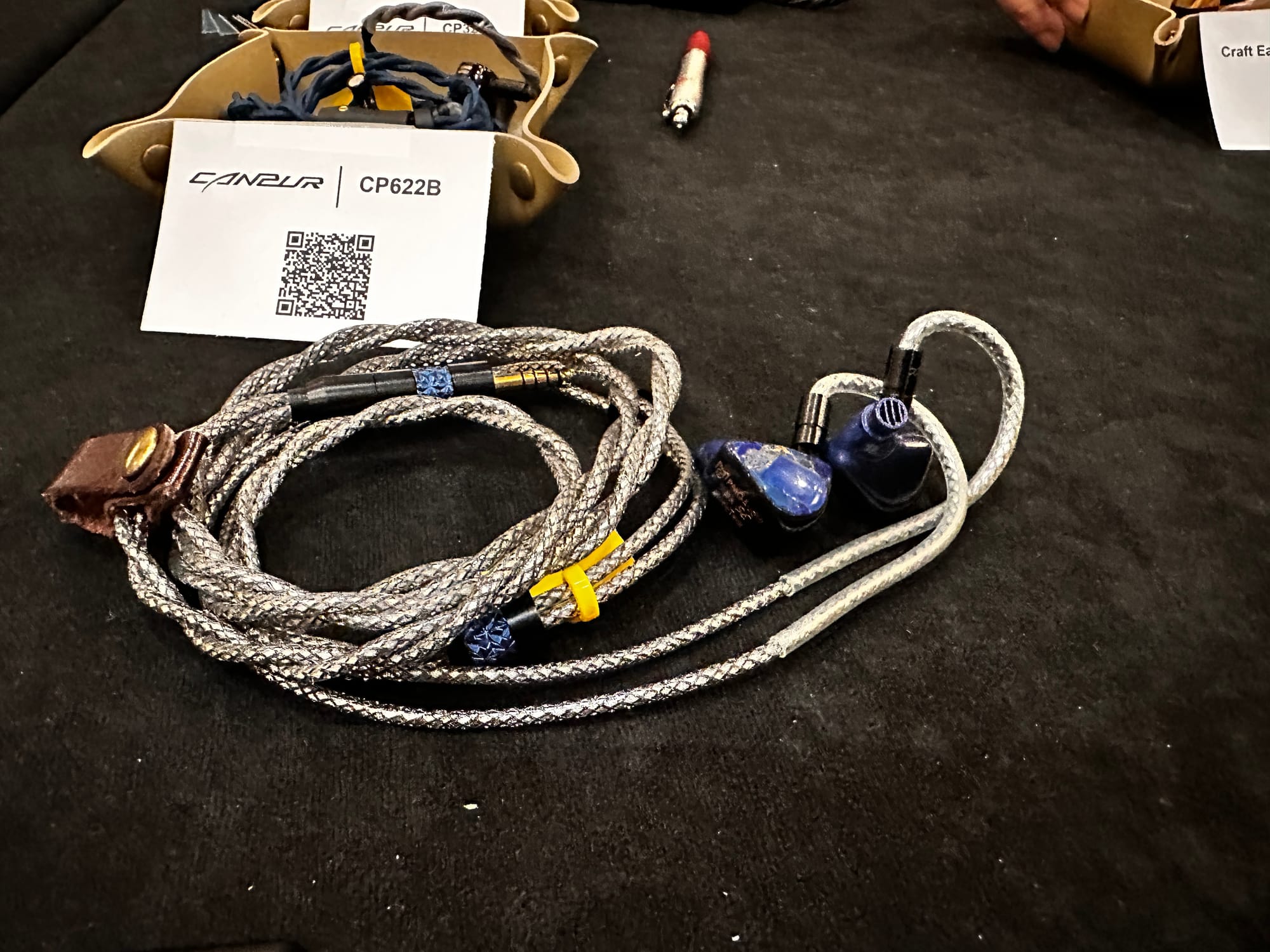
Technics
TZ700 — I’ve wanted to try the TZ700 for a while but always forgot to visit the Technics booth. I wish I did earlier. It reminded me of a more relaxed Sennheiser IE900, which is a bigger compliment from me than it might sound. At $1100, the cable and general fit and finish weren’t quite there for me, But, at a third of the price like I see them go for used in Japan, I can see the appeal, especially since they’re a rare bullet style IEM.
Amplifiers
Amps are always a tricky thing to demo at shows, especially if you use a headphone that’s unfamiliar to you. So, I always make sure to bring my ZMF Caldera to shows because I’m very, very familiar with how it sounds and it’s surprisingly amp reactive. So, if an amp sounds weird, I’ll immediately notice it.
Audma
ELISA — The amp itself sounded like a generic hashy solid state amp. But that’s not the party trick of the ELISA. What the ELISA does is have a hardware “speaker simulator” that did work on my head to simulate different “soundstages” this would be pretty cool as an external passthrough box since I really don’t like how the amp sounds.
Burson Audio
Voyager — This amp somehow made the Susvara Unveiled sound hazy, like I was using it out of an Apple dongle. This is what I’ve noticed from every Burson amp I’ve heard though, so this must be intentional…for some reason. Confusingly, the upper treble was harsher, so I don’t know who this amp is for.
Cayin
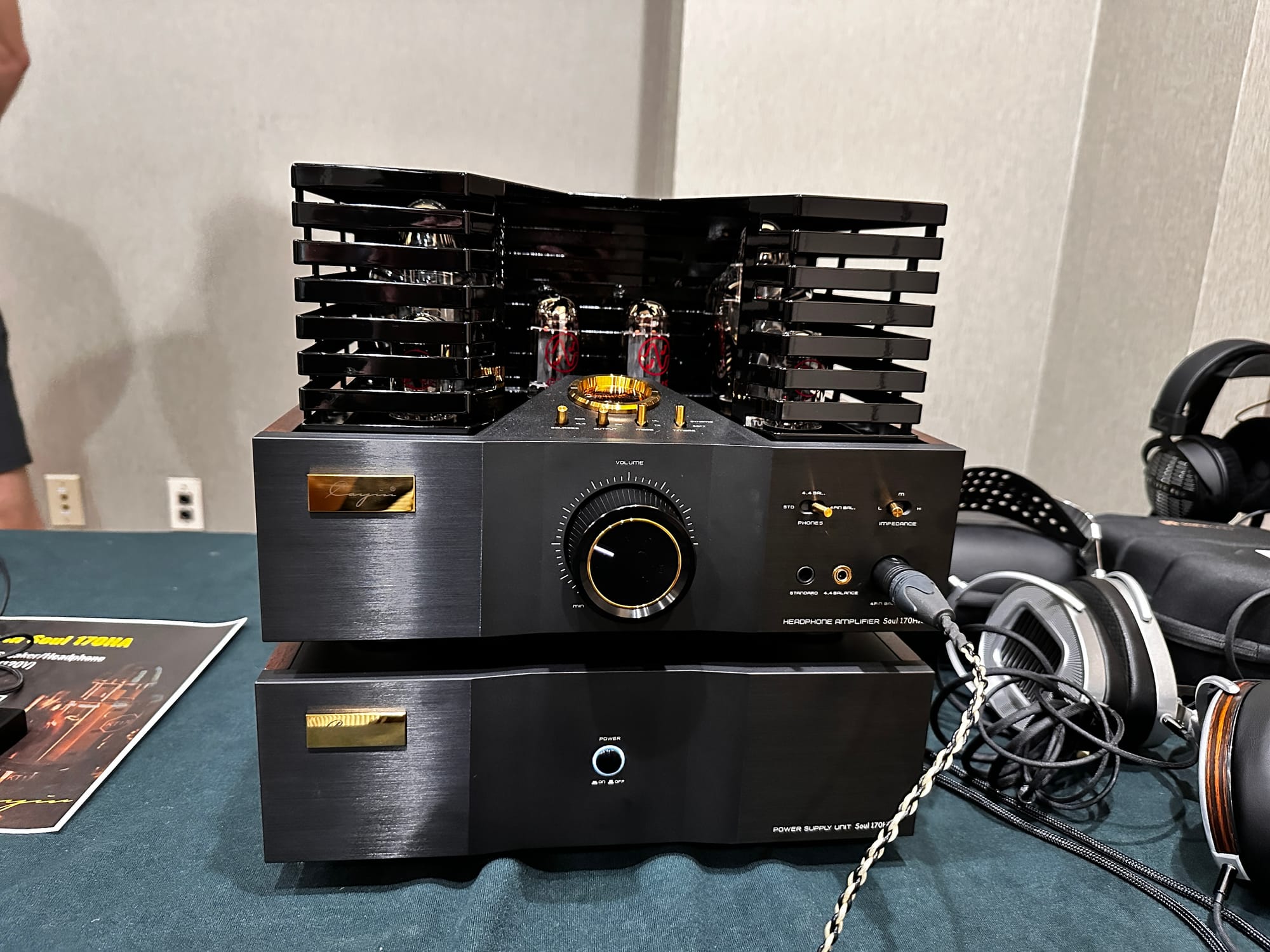
Soul 170HA — I forgot to try one combination of settings on the Soul, but I did try the three that made sense to me: Ultralinear Dynamic, Triode Dynamic, and Triode Soft.
Ultralinear Dynamic intuitively seemed like it was the one I should try first because it functions in push-pull mode, which aims to reduce even order harmonics. This comes at the cost of subjectively sounding leaner and drier to me. I didn’t like this setting. I’ve heard quite a few push pull amps–my Esoteric A100 is one–and this setting made it sound like…a generic push pull amp. It was dry, fairly dynamic, but unfortunately was so bright that it made my Caldera, a headphone that I perceive as pretty dark in the low treble, to be pretty uncomfortably sibilant.
Triode Soft was the setting that I expected to be pretty much the opposite of Ultralinear Dynamic. It was warmer as it seems to function as a SET (single ended triode) amp which does not minimize even order distortion. But it still sounded somewhat strident. It reminded me a lot of a less warm Bottlehead Crack with Speedball add-on. This adds a CCS circuit which has always seemed to overcorrect what makes the very warm-sounding Crack interesting by adding some hash in the treble. I think I liked this setting less.
Triode Dynamic did redeem the amp to me, somewhat. It rounded the edges of transients less which made the hash in the treble less noticeable to me.
I would absolutely take this over the Viva amps, the Feliks Envy, and Ampsandsound’s amps, but it still didn’t really do anything for me. The problem is that this is a $7,500 amp that’s, frankly, seems pretty pedestrian in design. We don’t need more cap coupled amps with 6SN7 drivers. I wouldn’t be surprised if both these things contributed to why this sounded so not special to me.
Chord Audio
Alto — I hated this amp. It was so soft and bright that I forgot I was using my Caldera and not a Susvara Unveiled. This probably should have stayed in the professional line.
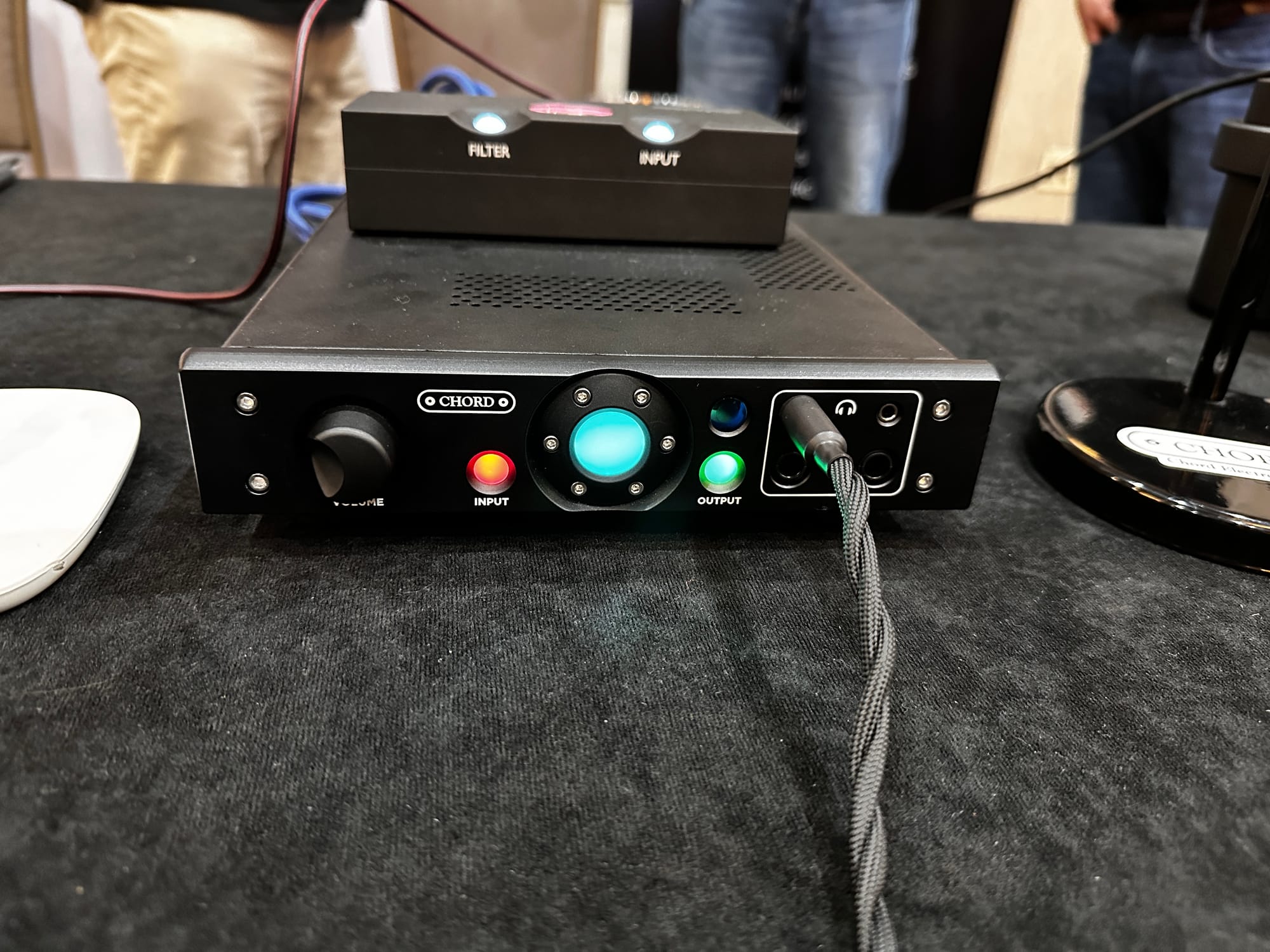
HeadAmp
CFA3 — I’ve owned both a Gilmore Dynalo and Dynahi, and I have a Dynamight on my list of projects to finish that I’m not sure I’ll ever get to finish. So, I’m familiar with Kevin Gilmore’s designs but this was not great. Bass was fine but somewhat lacking control. Midrange wasn’t too dry, but there was a noticeable sense of grit in upper midrange and treble so that resulted in a short session.
Woo Audio
WA24 — I felt this had better bass than the WA23 and was less hazy overall but I felt like I was missing some resolution I got with the Cayin Soul. The midrange was a bit etched in a way I recognize from other Woo Audio amps that bothers me. It’s overall a safe sound and I can see the appeal of that but for the amount of money it costs, I see more value in saying it’s a sculpture than an amplifier.
Cables
Towards the end of CanJam and I ran out of headphones and sources to hear, my friend let me borrow his Subtonic STORM to test cables with, as it’s one of the few IEMs I’ve used where cable differences are noticeable enough that I didn’t feel like I was guessing differences. The control is the Sovereign Symphony that it came with, which is a cable that I think sounds so good I’m confounded by why and how it sounds different.
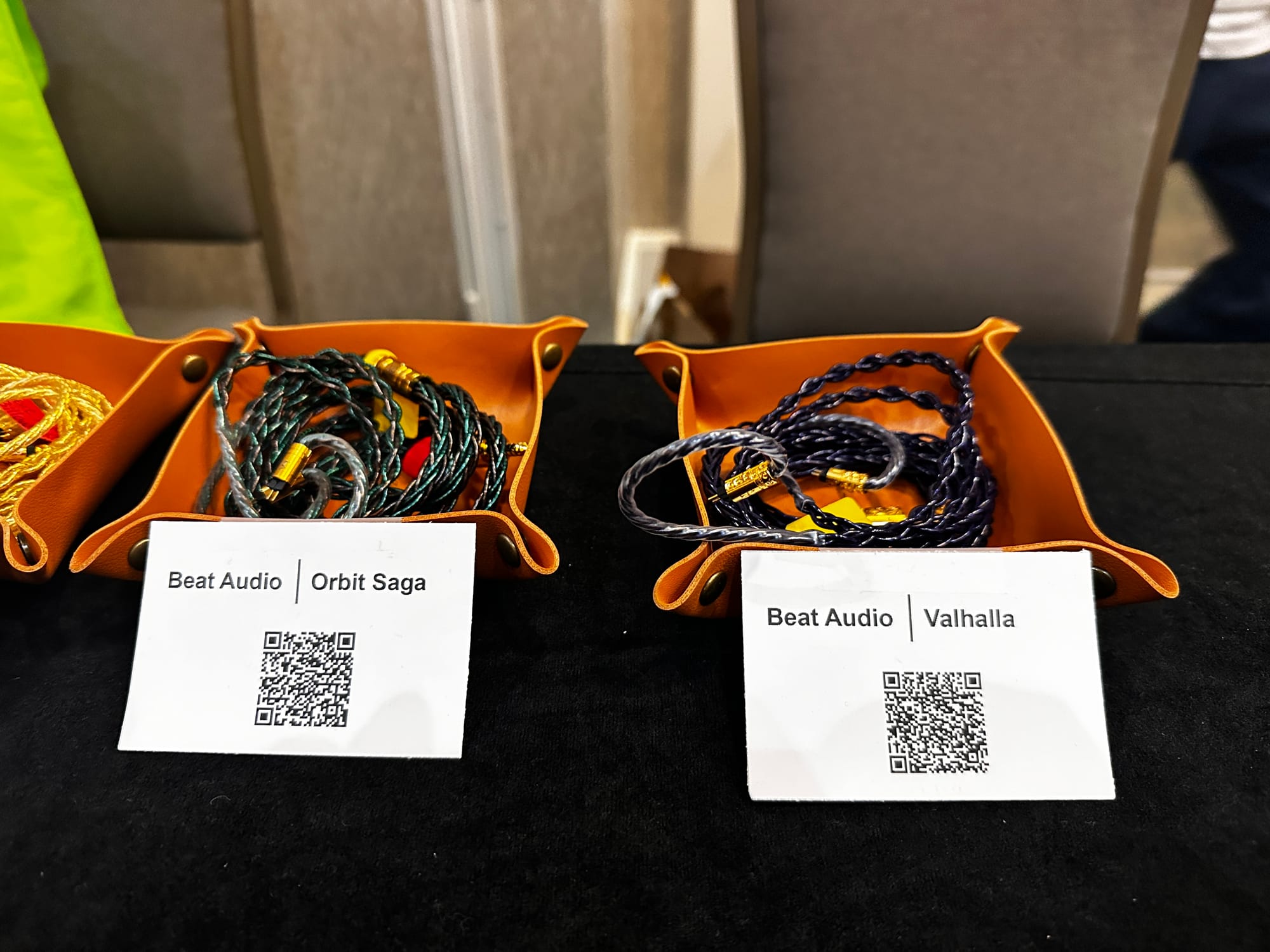
Beat Audio
Valhalla — This is Beat Audio’s newest flagship and it wasn’t a great pairing with the STORM. It staged a bit smaller, and treble sounded more strident. The biggest difference, though, is that the bass sounded thin and soft enough that I worried I changed the volume, but swapping back to back showed that I definitely did not touch the volume. I don’t think this cable is a great pairing with the STORM, but I do think if these qualities transferred to other IEMs, it might work with thicker, darker sounding IEMs like the FitEar DC I forgot to bring to the show.
Orbit Saga — I didn’t like this cable. It made the STORM’s midrange, which is pretty close to bang on perfect for me, nasal sounding. I didn’t even glean much else other than this because it was so weirdly bad.
PW Audio
First Times LTD — This cable sounded thicker than the Beat Audio cables but it gave a sort of tin can tone to vocals which was fairly unpleasant.
First Times Shielded — This is the PVC shielded version and I don’t know why it sounded so different, but it added a hazy character that strangely I didn’t find that bad on the STORM. I don’t think I’d like it on a daily basis though, and I certainly wouldn’t pay what it costs for that mildly different sound.
Extras
I went to CanJam New York this past March and never had the time to post a full article, but here are a few highlights:
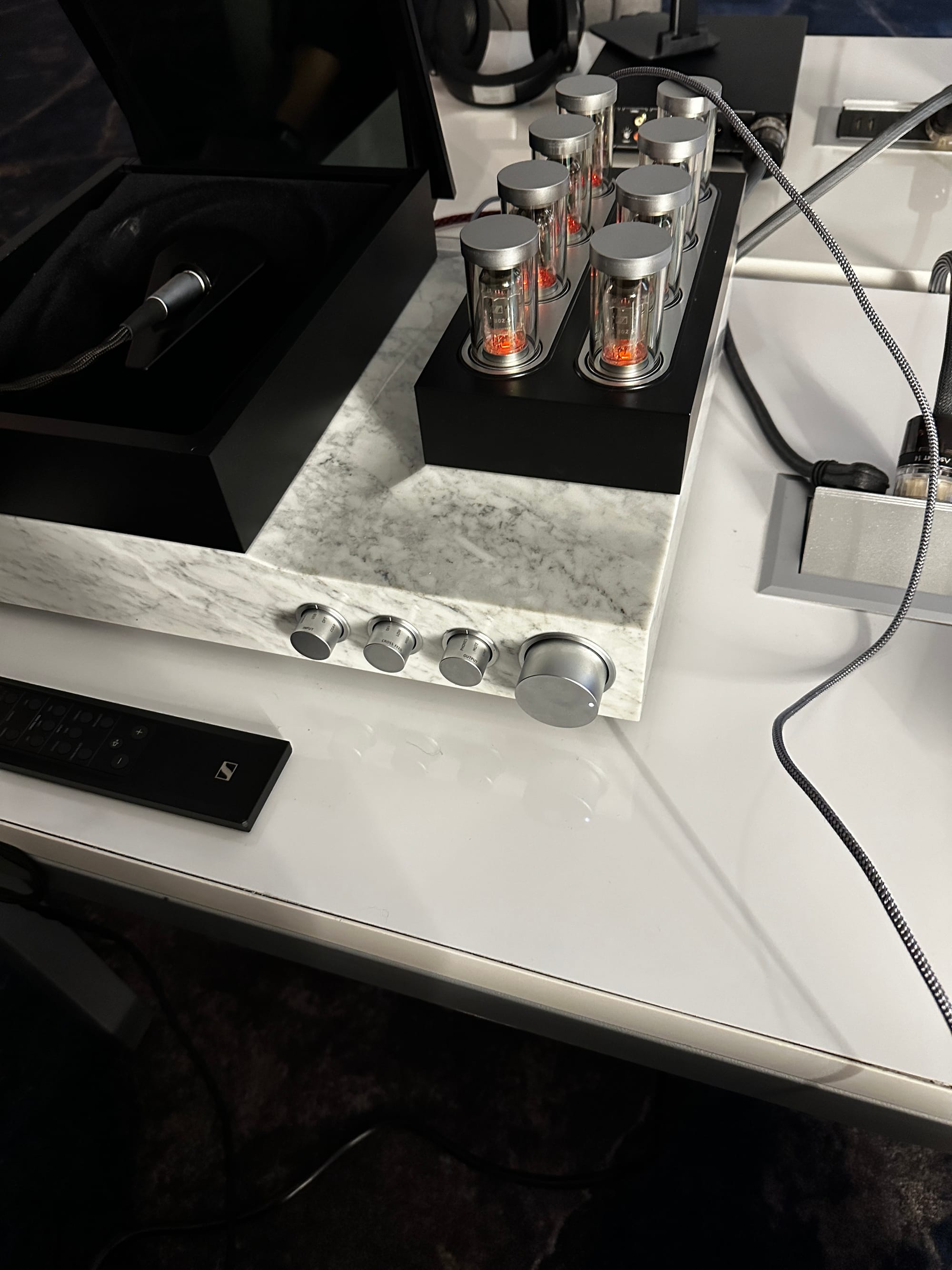
Sennheiser HE-1 — It’s an electrostatic headphone tuned sorta Harman. It has elevated bass, but that bass really does not have attack or texture—neither do the midrange or treble, while I’m at it. The midrange sounds incredibly nasal but also incredibly recessed. The treble was weirdly unsettling in that it wasn’t particularly elevated compared to a Stax SR-X9000, but it gave me an unexplainable sense of unease. It’s cool that the bass is this elevated on a stat, but the bass that is there…sucks. I tried really hard to find music that sounded good with it but everything sounded off to me. I legitimately would slot this between the HD560S and HD600 if I tried this headphone blind.
Audio Technica Narukami — I had this demo about a half hour after the HE-1 demo so I was fresh off being disappointed by an expensive setup. At $108,000, a mere $48,000 more than the HE-1, the Narukami managed to make a statement before the the demo even began. Audio Technica is known for making weird tunings, and it's historically been impossible to guess if I'd like anything from them. Unfortunately, for me, I really liked the setup. It was surprisingly dynamic and absolutely colored in a W-shaped way, not that unlike the ADX3000 to a lesser degree. The lower midrange was filled out in a way I hadn't heard in a closed non-M-Series Audio Technica headphone and the treble wasn't overwhelming. It made the normal production of the Narukami headphone, the ATH-AWKG, much more tempting for me.
I did end up getting permission to try the amp myself with my Caldera, and I actually found that the headphone did a lot of the heavy lifting for the combination. The Narukami amplifier uses two pairs of 300Bs run parallel. I'm fairly familiar with 300B amps and found that unless designed to work around it, 300B amps can sound warm and lacking in control. With the Caldera, the Narukami sounded somewhat congested and lacking focus. I wouldn't assume it's power related because the parallel 300B design should be more than enough power for the Caldera. I did notice a bit of harshness, so I asked the representative if the transformers were silver, and I was right. Whether this is the reason for the glare or not, it was nice being validated in some way. I do appreciate that the Narukami bucked the trend of capacitor coupled designs and used interstage transformers, but in the end, I still wasn't a huge fan of the amp.
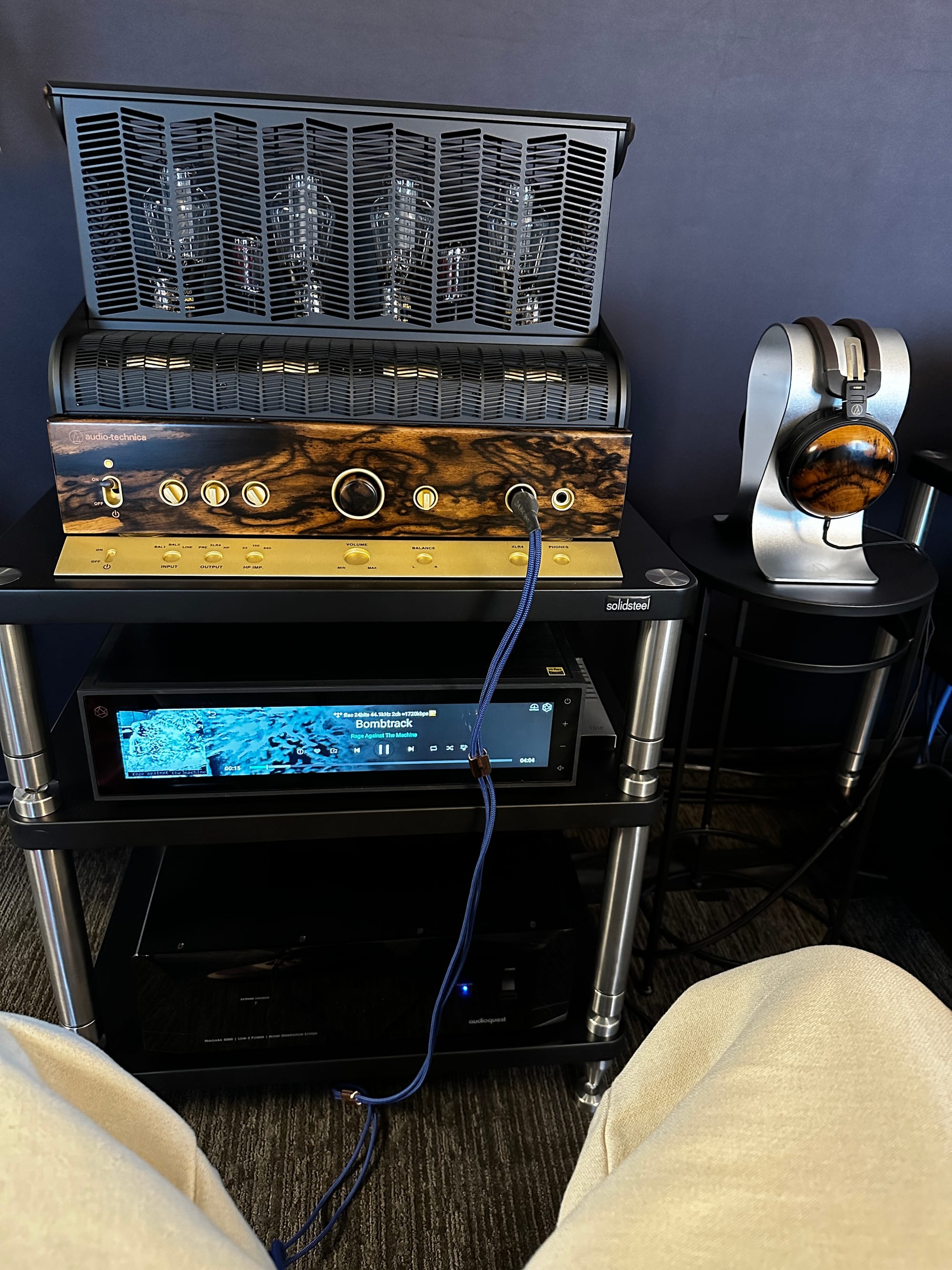
Metaxas and Sins Ethereal — I'd be in remiss if I didn't say anything about this amp. It made the SR-X9000, a headphone I really like, sound as harsh as the SR-009. It sounded horrible. So not only does this look like a high school boy's idea of their dream amp (guess how you adjust volume), it sounded like garbage too.

Conclusion
Unfortunately, most of the audio was a bust, but the reason I go to CanJams is to be able to see the friends I've made over the years. Headphones are inherently a somewhat individualist hobby by nature, as only one person can use a pair of headphones at a time, and concerns about personal hygeine are valid. However, it's always fun to bond with a stranger at a show about a headphone you like, and further conversations can spark from there. While there were a few stand out products for me like the Clara and the Azurys, I've learned that CanJam is best when the excitement is shared and you figure out what other people enjoy.
Comments?
Leave us your opinion.